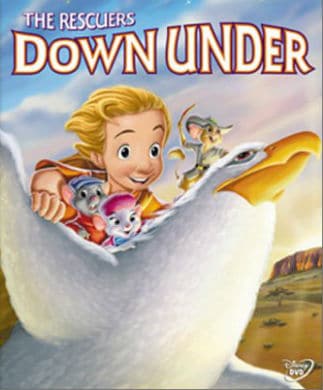
Welcome to Revisiting Disney! Today, we have entered the 1990’s and are looking at a film that I think most of us recall fondly, this is The Rescuers Down Under! Like always, I have labeled each category so if you want to skip to the parts that interest you most, feel free. And, of course, if you have any thoughts, burning or otherwise, please share in the comments!
BACKGROUND OF THE RESCUERS DOWN UNDER
This has always been one of my favorite Disney movies, so I’m excited to get to talk about it today! Released on December 16th, 1990, The Rescuers Down Under is the sequel to the earlier The Rescuers. Although it was a disappointment at the box office, it’s one of those movies that I think people look back on fondly. It was not only the first Disney sequel, but it is also one of the only Disney Sequels to be listed in the official Disney Canon, so it can’t be viewed as that embarrassing (Fantasia 2000 and an additional Winnie the Pooh movie being the other two).
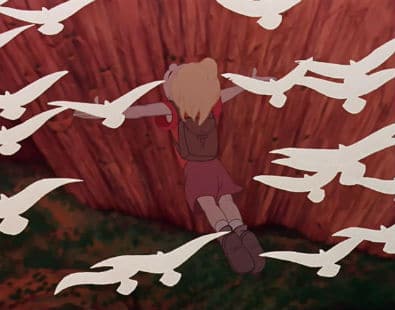
Photo: Disney
Because the last two Disney films, The Little Mermaid, and Who Framed Roger Rabbit? had both been very expensive and time-consuming, the Studio had decided to make a cheaper film like they had with Dumbo years earlier. Since the Studio already owned the rights to Marjorie Sharp’s stories, and The Rescuers had been so popular, it was a perfect fit.
RELATED: REVISITING DISNEY: THE RESCUERS
Originally, this had been planned to be the second in a trilogy of films about Bernard and Miss Bianca with the third coming out in 1996, but Eva Gabor passed away in 1995, so that idea was tossed. Because let’s be real, how could they recast Miss Bianca?
SPECIAL ASIDE-THE LAST OF THE NINE OLD MEN
Okay, before we really get into the Disney Renaissance, I have the last two of the Nine Old Men to talk about. Briefly, I want to mention Ward Kimball and Eric Larson, mostly because they snuck out of the Studio before I realized it. Ward Kimball transitioned out of animation but still worked for the Company, and Eric Larson worked as a teacher in many of his last films, quietly sneaking out. So, here they are!
Ward Kimball was born in March 1914 in Minneapolis, MN, and joined the Studio in 1934. He assisted with Mickey Mouse’s new look, as well as animating Jimmy Cricket and the mice in Cinderella. He retired in the early 1970s, and would be named a Disney Legend in 1989.
In addition to his work as an animator, he was also a musician (forming the Firehouse Five Plus Two-a jazz band made up of Disney employees) and enthusiastic about trains; he and his wife had a full-sized steam railroad in their backyard (the first private citizens in the US to have one). He not only got Walt interested in trains, but he designed the World of Motion Display at EPCOT (Disneyworld). Ward Kimball passed away in July 2002, in Arcadia, CA.
Eric Larson was born in September of 1905 in Cleveland, Utah. He began working for Disney in 1933, as an ‘in-betweener,’ until Hamilton Luske, an animator at Disney, made him an assistant animator. Working on Snow White, he assisted in the creation of the forest animals and would serve as an animation director for Pinocchio and animate Figaro. He served as a directing animator for several films, and a Sequence Director in Sleeping Beauty, also working as a character animator later on.
Retiring in 1986, Larson worked as a consulting animator for both The Black Cauldron and The Great Mouse Detective. Larson would die in October 1988, and in 1989 would be honored with the Disney Recognition of Honor, posthumously.
MUSIC
The music in The Rescuers Down Under was composed by Bruce Broughton, who had composed the music for Silverado in 1985, and would compose the score for Tombstone, Lost in Space, the theme for “Jag,” and the title sequences and several episodes of “Tiny Toon Adventures” later on in the 90’s. Born in 1945 in Los Angeles, Broughton has worked in a variety of mediums, including television and film to computer games, and uses both the traditional orchestra and a more electronic style.
The Rescuers Down Under is unique in that there are no characters singing songs (other than the occasional throwaway ditty). This is, actually, the first time that this happened since The Black Cauldron, only there were no ditties in that film at all). Disney tends to like musicals, so these are the only two non-musical films at this point.
The music is amazing, because it uses didgeridoos and other musical instruments from Australia, incorporating a rich musical tapestry. This, along with some pieces from the first movie, (and a sense of epic), makes this one of my favorite Disney scores. The music is appropriately dramatic and sad at the right times, there are some meaningful moments of silence, and like the animation, it only “benefited from the exotic landscapes and animals,” (Thomas 1992: 121).
ANIMATION
The Rescuers Down Under was the first Disney film that was made completely using computer animation. As Ollie Johnston and Frank Thomas write, “there would be no more troublesome and expensive work on cels. It would all be done electronically” (Johnston and Thomas 1993: 195). The film was done using CAPS (Computer Animation Production System), which would cut down production by six months.
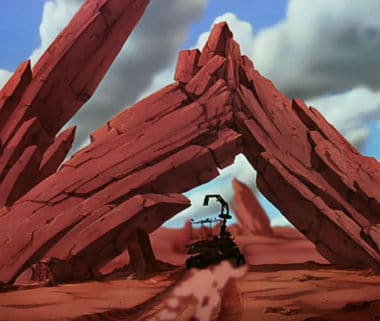
Photo: Disney
The thing that happened was that the animation and the backgrounds were all done in the traditional method, but then the coloring and some of the effects were done digitally, as was the printing of the final copy. However, some of the background scenes were computer generated and not done by hand.
The flying scenes here are fantastic and are supposedly based on the films of Hayao Miyazaki, whose films often have amazing and elaborate scenes of flying. The flight sequences, in particular, used multi-plane shots, which used the computer to create the layering effect, rather than the camera shots from previous films. This gives it a more real feeling (as do the sound effects).
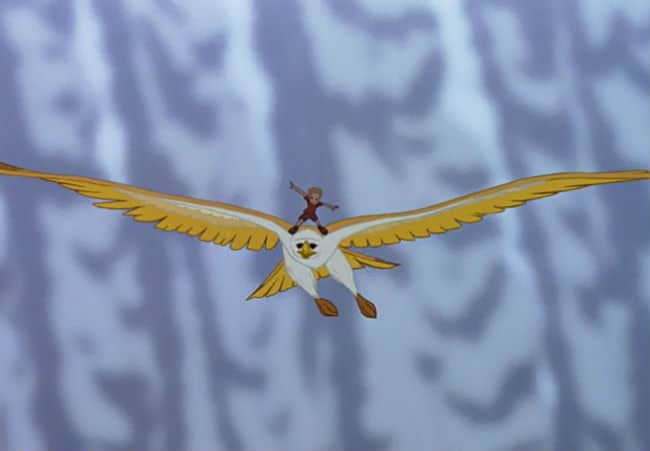
Photo: Disney
The computer technology also allowed things like McLeach’s truck/cage to be drawn, because, as Johnston and Thomas point out, it would have been impossible to draw by hand. Digitally, however, they could draw it, and turn it on a dime.
Duncan Marjoribank, the animator who worked on the villain McLeach, felt that he never quite portrayed him in the way that he wanted to, and others thought he was a bit flat, as far as villains go. I always thought that he didn’t have to be an overly complex villain. He kidnapped a kid to kill a rare eagle, and the fact that he had no complex backstory made him scarier. Even as an adult, the idea that someone is so evil, just because he can be, works and fits into the adventure story that Disney has created here.

Photo: Disney
Using computer technology in a way that it hadn’t been used yet, The Rescuers Down Under helped the Disney animator’s regain their confidence for work on what is arguably one of their greatest triumphs, Beauty and the Beast. After this film was released, Johnston and Thomas report that Jeffery Katzenberg was impressed by the work that came out of The Rescuers Down Under, particularly the villain. He called it a “spectacular, spectacular movie,” and it really is.
THE PLOT
Our story opens with a young boy named Cody, who hears a call from one of his animal friends that someone is in trouble. He immediately heads out (after reassuring his mom that he’ll be home in time for supper), and rounds up the rest of his outback friends on the way.
It turns out that Marahute, the great golden eagle, is caught in a poacher’s net on a cliff. It also turns out that none of the animals can free her, Cody is the only one who can. He climbs up and begins to cut her lose, but the when she sees the knife he’s using, she panics (which is fair), knocking Cody off the ledge.
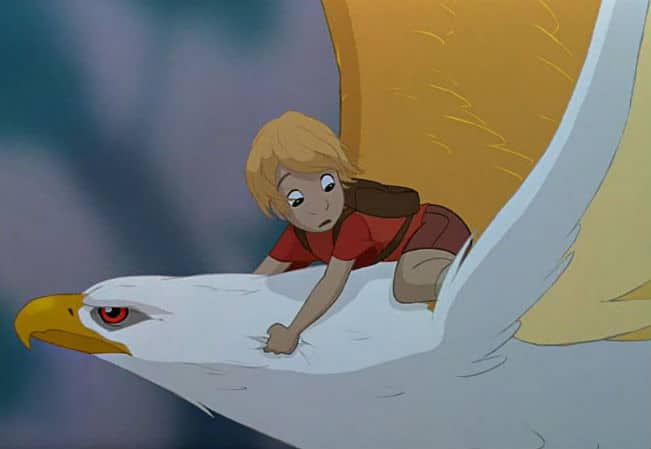
Photo: Disney
He is pretty scared because it’s not a short fall, but Marahute swoops down and catches him just in time. To thank him for saving her life, Marahute takes Cody for a ride and even brings him to her nest. On finding out that Marahute’s mate is gone, just like his father, the two bond even more. Marahute gives Cody a feather and a ride home. Best day ever.
On the way home, however, Cody sees a poor little mouse caught in a trap and, when he tries to free it, is caught himself. The poacher, Percival C. McLeach, was going to let him go (though Cody wasn’t buying his claims that he wasn’t a poacher), until Joanna, McLeach’s pet lizard sees the eagle feather. Realizing that Cody knows where the eagle nest is, McLeach kidnaps him until he talks, throwing his backpack to the crocodiles in Crocodile Falls, to throw off the Rangers.
The mouse Cody saved gets away and rushes to the nearest telegraph station to send a message to that eventually reaches the Rescue Aid Society. They, in turn, convene an emergency meeting to send out their best team, Bernard and Miss Bianca, to rescue the boy. However, this best team isn’t at the meeting, and someone is sent out to find them.
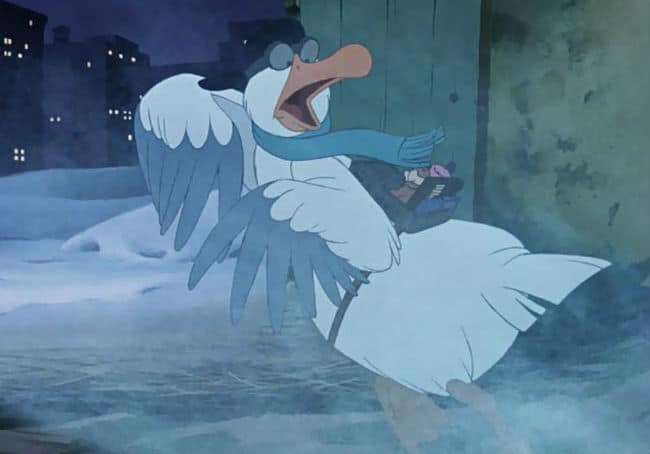
Photo: Disney
Our heroes are out at dinner, where a nervous Bernard is trying to propose to Miss Bianca and keeps getting interrupted. Through a series of misunderstandings, he thinks she’s said yes to getting married, and she thinks he’s agreeing to go on the mission to Australia, not realizing that he’s trying to propose. So she’s confused when he suggests next April as a date, and he’s confused when she mentions needing hiking boots.
They eventually do set out (Bernard is game, though disappointed), and try to get a ride with their old friend Orville. Orville is gone, so they go to his brother Wilbur, who now owns the business. After much convincing, they are able to charter a flight to Australia, and it is not a smooth journey. Finally touching down at their airport, they meet Jake, a local who enamored of Miss Bianca and offers to serve as their guide.
Knowing that local intelligence is critical, they agree, though Bernard, who has never been the bravest, finds himself struggling in the Outback, in an environment that Jake seems quite at home in. They travel through the Outback, using a variety of animals as their transportation, which is fun (because we get to see more of the Outback). As they travel, Bernard keeps trying to propose and keeps getting interrupted by either Jake or by life and death situations.

Photo: Disney
Meanwhile, at McLeach’s hideout, McLeach is trying to convince Cody to tell him where Marahute’s nest is, first by throwing knives at the map behind him and then by offering to share the money from the sale. This is a terrifying moment, mainly because there is someone throwing knives at a little kid, in an effort to find a bird.
McLeach is a truly terrifying villain, and this scene reminds me of that. Cody refuses to talk, reminding McLeach that the Rangers will get him. Not used to losing, McLeach locks him up with the illegal animals he has captured for the night, to see if a night in a cage will make Cody talk.

Photo: Disney
This gives us a chance to see more of the wonderful creatures of Australia, including a sarcastic and cynical koala and a frill-necked lizard named Frank. Cody encourages the animals to try to escape, and Frank manages to get out of his cage, even facing down Joanna. Before the rest of them can get out, however, McLeach hears the noise and puts an end to it.
During the escaping, you see, McLeach had realized that the way to manipulate Cody was through the eagle eggs. Telling Cody that Marahute was killed that morning, and it’s too bad that the eggs won’t make it, he sets him free. Bernard, Bianca, and Jake see the whole thing and agree it looks suspicious.

Photo: Disney
Turns out that McLeach was planning to follow Cody to the nest and then grab Marahute there, feeding the eagle eggs to Joanna. Although Bernard and Bianca try to warn Cody, they’re too late and Marahute is captured by McLeach with a large net. Cody jumps on the net and tries to save her, and in the confusion, Bernard is left behind on the nest, while everyone else is captured.
Guessing that Joanna is coming to eat the eggs, Bernard manages to hide them all in time, and when Wilbur arrives (he was at the doctor’s office with back problems and has been trying to find his tiny friends), Bernard tells him to watch the eggs while he goes after McLeach.
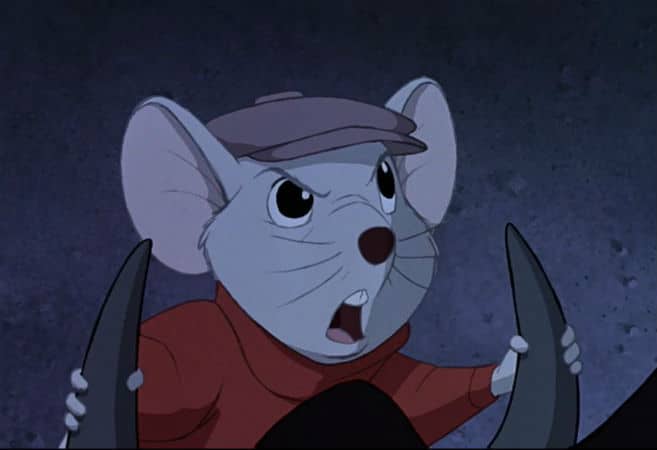
Photo: Disney
Bernard, remembering something Jake told him, tames a razorback and manages to sneak into McLeach’s truck. The truck, at this point in time, is parked on the edge of Crocodile Falls, where McLeach is fishing for crocodiles. He’s using Cody for bait because Cody is the last loose end he needs to tie-up in his poaching scheme.
Bernard manages to turn off the truck and get the key to Bianca and Jake. Without the key, Cody should be safe, but McLeach decides that he should just shoot the rope that keeps him just above the crocodile’s reach. Bernard has to act fast and kicks Joanna in the nose. She chases him, and he runs to McLeach, causing her to push her master off the cliff. The crocodiles turn from the unreachable boy to the man and lizard in the water.
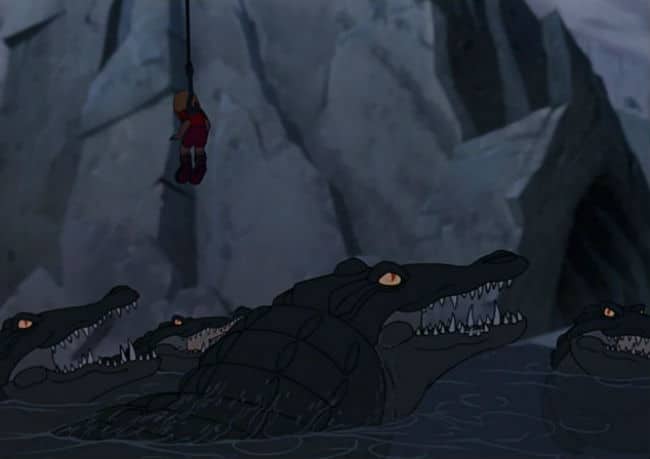
Photo: Disney
Unfortunately, McLeach had splintered the rope and Cody suddenly drops into the water. Bianca sees Cody fall and alerts Bernard, who immediately jumps in to save Cody. Grabbing the rope, he stops him from sinking, but they are headed toward the waterfall. Bernard finds a branch and ties the rope to it to stop them from moving.
Meanwhile, McLeach is fighting off the crocodiles and doesn’t realize that he is dangerously close to the waterfall. Sadly, he goes over the edge and dies, but since he died how he was trying to kill someone else, it’s quite poetic.
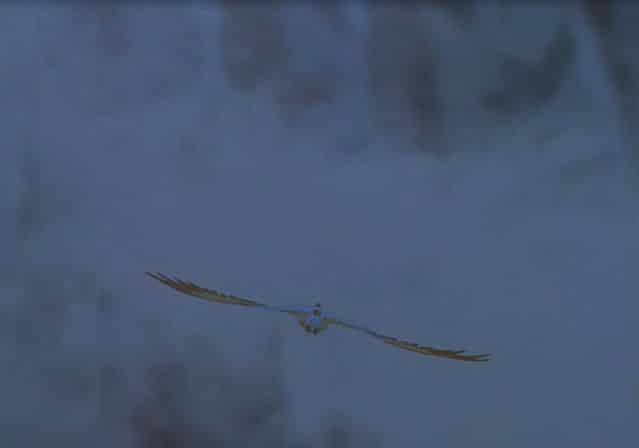
Photo: Disney
Back to Bernard and Cody, the branch they are attached to has snapped, and they are swept to the falls. Luckily, Jake and Bianca manage to unlock the back of their truck cage, and hoping on Marahute’s back, they fly to the rescue, catching their friends in just the nick of time.
Once they’ve flown away from Croc Falls, Cody thanks Bernard for saving his life. In a wonderful ending, Bernard finally gets a chance to propose (she says yes), and Marahute takes Cody home. Back at the eggs, they have started to hatch and may have become very attached to Wilbur. Oops. I assume that Cody goes home to his mother (who thinks he is dead), and then takes the Rangers to McLeach’s hideout and frees the animals there.
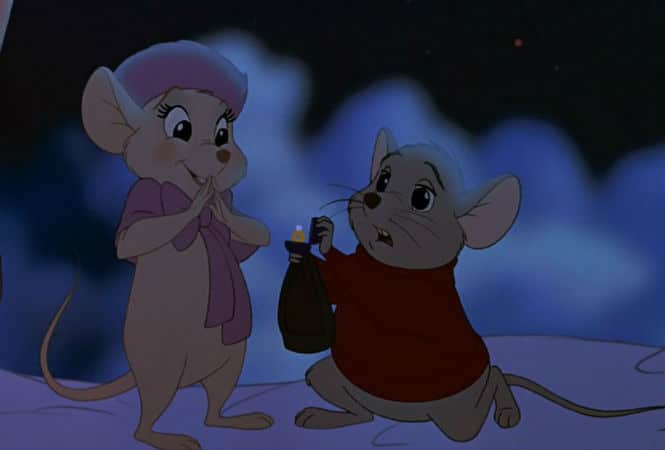
Photo: Disney
SOURCE MATERIAL
Like The Rescuers, before it, The Rescuers Down Under was based on a series of stories by Margery Sharpe and starred the mice of the Rescue Aid Society, Miss Bianca and Bernard. The story itself was written by Joe Ranft, who would have worked on a story for Oliver & Company, and would go on to work on Beauty and the Beast, The Lion King, Toy Story, A Bug’s Life, and Cars.
Margery Sharp was born Clara Margery Melita Sharp on January 25th, 1905 in Wiltshire, England. She died on March 14th, 1991 in Suffolk. During her life, she wrote multiple books, including a nine-book series that included “Miss Bianca,” “The Rescuers,” “The Turret,” and “Miss Bianca and the Salt Mines.”
As near as I can tell, The Rescuers Down Under is not based on one particular Sharpe story, but more on the ideas, and taking those that had been explored in the first film and running with them.
The 1990’s
We are now in the 1990s! To start off, I want to mention the President of the early 1990’s, George H.W. Bush, and some of the events that were happening during his presidency that might have affected the Studio. Elected in 1989, George HW Bush was the 41st President of the United States of America and had served as President Reagan’s Vice President from 1981 to 1989. He had served as a naval aviator in World War II and served as a member of the House (and various other government positions).
In the Presidential races of 1988 and 1992, he defeated Democrat Michael Dukakis in 1988, but would be defeated by Bill Clinton in 1992. The History Channel’s database (which I do trust as a historical source, just not their films), points out despite the success of his operations against Panama and Iraq, the economic recession did not give him a good reputation in the States, and that likely contributed to the results of the 1992 election. Perhaps the economic recession played a role in the way The Rescuers Down Under performed at the box office? Just unfortunate timing?
President Bush was in office when the Cold War was ending, and as President worked on improving relations between the US and the Soviet Union, meeting with Mikhail Gorbachev and signing the Strategic Arms Reduction Treaty in July of 1991.
In December of 1989, he authorized an invasion of Panama, where the US helped overthrow Manuel Noriega, dictator of Panama. This protected the people of Panama and the American citizens who lived there, as well as cutting down on drug trafficking. The other and more well-known military action authorized by President Bush is operation Desert Storm. After Saddam Hussein of Iraq invaded the neighboring country of Kuwait in 1990 0and then threatened to invade Saudi Arabia as well, the US lead 30 other countries in a combination air and land strike. After five weeks, Iraq was defeated and Kuwait was freed.
The cooperation with other countries in Operation Desert Storm might have been a contributing factor in the setting of a Disney film in another country. I might be reading too much into that, but that all had a major impact on life in the US at the time.
Another thing that happened in 1990 was that Nelson Mandela was released from prison. I’m not sure if that relates to The Rescuers Down Under, but it was a great fact that I wanted to share. I’m sure we’ll come back to that.
LESSONS LEARNED
There are a couple of lessons from The Rescuers Down Under. First, I have always loved the character of Bernard, and this movie reminds me of why. He’s afraid of everything, but is still willing to set aside his fears to do what’s right. When his friends are in trouble, he risks everything to save them, and he risks his life to save Cody, not because he knows him, but because it’s the right thing to do.
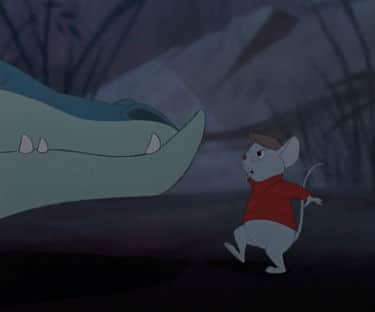
Photo: Disney
Second, and there are a few in this one, sometimes, doing what’s right is risky, but some things are worth dying for. Cody was doing the right thing by saving Marahute, and then by saving the mouse in the trap, and he nearly lost his life. By trying to do what was right, regardless of what might happen to him, he was saved by the very people that he was risking his life to save. It’s true that doing the right thing is its own reward, but in this case, there were some other advantages too.
DOES IT HOLD UP?
Regardless of how it was received at the box office in terms of ticket sales, The Rescuers Down Under was a critical success and is looked back on fondly today. In addition, it does have an amazing score, and the animation is absolutely stunning. The scene where Cody and Marahute go flying, and the scene at Crocodile Falls, together make the movie worth watching, if the fun story, setting, and music doesn’t convince you. It’s a gem of a film that is still good today.
For next week: Beauty and the Beast
If you enjoyed this post and the others in the Revisiting Disney series, and have found yourself wishing that you could find them all in one convenient and bound book with eight extra essays, there is an option for you! Check out A Journey Through Disney: My Look Back Through Disney Canon, now available on Amazon as both a Kindle book ($4.99) and a paperback ($11.99).
OTHER SOURCES:
https://thewaltdisneycompany.com/about-disney/disney-history
http://www.imdb.com
http://studioservices.go.com/disneystudios/history.html
http://www.history.com/topics/1990s
Bailey, Adrian. Walt Disney’s World of Fantasy. Everest House Publishers. New York, New York. 1982.
Finch, Christopher. The Art of Walt Disney: From Mickey Mouse to the Magic Kingdom. Harry N. Abrams, Inc. New York, New York. 1975.
Johnston, Ollie and Frank Thomas. The Disney Villain. Hyperion. New York, New York. 1993.
Sale, Roger. Fairy Tales and After: From Snow White to E.B. White. Harvard University Press. Cambridge, MA, 1978.
Tatar, Maria. The Annotated Classic Fairy Tales. W.W. Norton and Company. New York and London, 2002.
Thomas, Bob. Disney’s Art of Animation From Mickey Mouse to Hercules. Hyperion. New York, New York. 1992.
Wright, Gordon. The Ordeal of Total War: 1939-1945. Harper Torchbooks, Harper & Row. New York, Hagerstown, San Francisco, and London, 1968.
ARE YOU A ROMANCE FAN? FOLLOW THE SILVER PETTICOAT REVIEW:
 Our romance-themed entertainment site is on a mission to help you find the best period dramas, romance movies, TV shows, and books. Other topics include Jane Austen, Classic Hollywood, TV Couples, Fairy Tales, Romantic Living, Romanticism, and more. We’re damsels not in distress fighting for the all-new optimistic Romantic Revolution. Join us and subscribe. For more information, see our About, Old-Fashioned Romance 101, Modern Romanticism 101, and Romantic Living 101.
Our romance-themed entertainment site is on a mission to help you find the best period dramas, romance movies, TV shows, and books. Other topics include Jane Austen, Classic Hollywood, TV Couples, Fairy Tales, Romantic Living, Romanticism, and more. We’re damsels not in distress fighting for the all-new optimistic Romantic Revolution. Join us and subscribe. For more information, see our About, Old-Fashioned Romance 101, Modern Romanticism 101, and Romantic Living 101.

This film is so under-rated, I love the music especially 🙂 I think I read somewhere that it did badly because it was released the same weekend as Home Alone?
I agree; it’s wonderful and so under-rated! They were! Yeah, it’s really sad. It didn’t open well, so they pulled most of the advertising. The movie never recovered.